28 things to do in Drenthe province
If you’re not from around here, you’ve probably never heard of Drenthe, a province in the east of the Netherlands. When I decided to make a list of things to do in Drenthe, I was surprised at how many there are. Some are a bit odd or obscure, but those are the places I like best! I’ve been to some of these, but mostly many years ago, when I tended to drag my kids to whatever might keep them and me entertained for a while.
Disclosure: This article contains affiliate links. Making a purchase through an affiliate link will mean a small commission for this website. This will not affect your price.
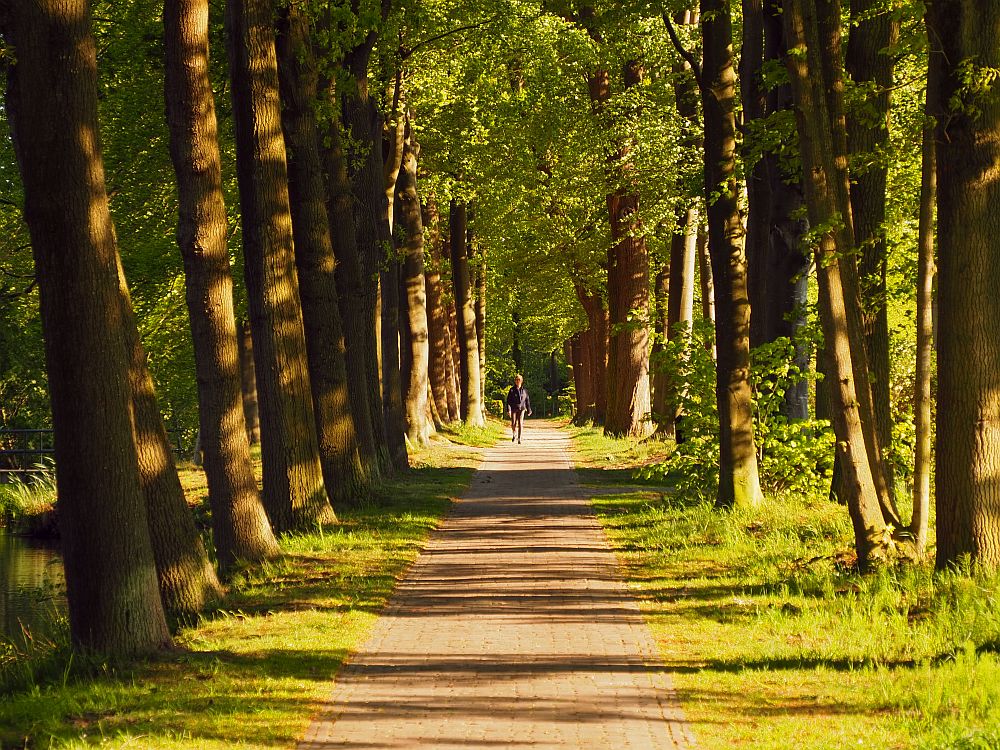
Few sights in Drenthe are well-known internationally that I can think of. Perhaps the former Emmen Zoo, now called Wildlands, and the Drenths Museum in Assen have made enough of a name for themselves to be known further afield. The rest of them? Not so much.
As I pointed out in my post listing things to see in Groningen province, tourists rarely come to this side of the country, preferring to visit Amsterdam and perhaps Keukenhof (tulips) and Zaanse Schans (windmills). If that describes you, think about visiting the three provinces in the northeast corner of the country: Groningen, Drenthe and Friesland. The countryside is scenic, there’s plenty to see, and you won’t have to navigate your way through hordes of tourists!
If you want to jump to a particular sight, just click on it in the table of contents below.
CULTURAL AND INDUSTRIAL HISTORY
The Hunebed Center
A hunebed is a megalith, or, rather, a burial mound made by Stone Age people. It’s a pile of rocks, in other words, and not nearly on the scale of Stonehenge. Nevertheless, the Hunebedcentrum, in Borger, in Drenthe province, gives insight into the people who built the structures and how they lived. There are models and dioramas and a reconstruction of a Stone Age house.
The landscape around the Hunebedcentrum is eminently suited to walking and cycling; their website lists routes starting from the museum that take you to see many of the surviving hunebeds in the area.
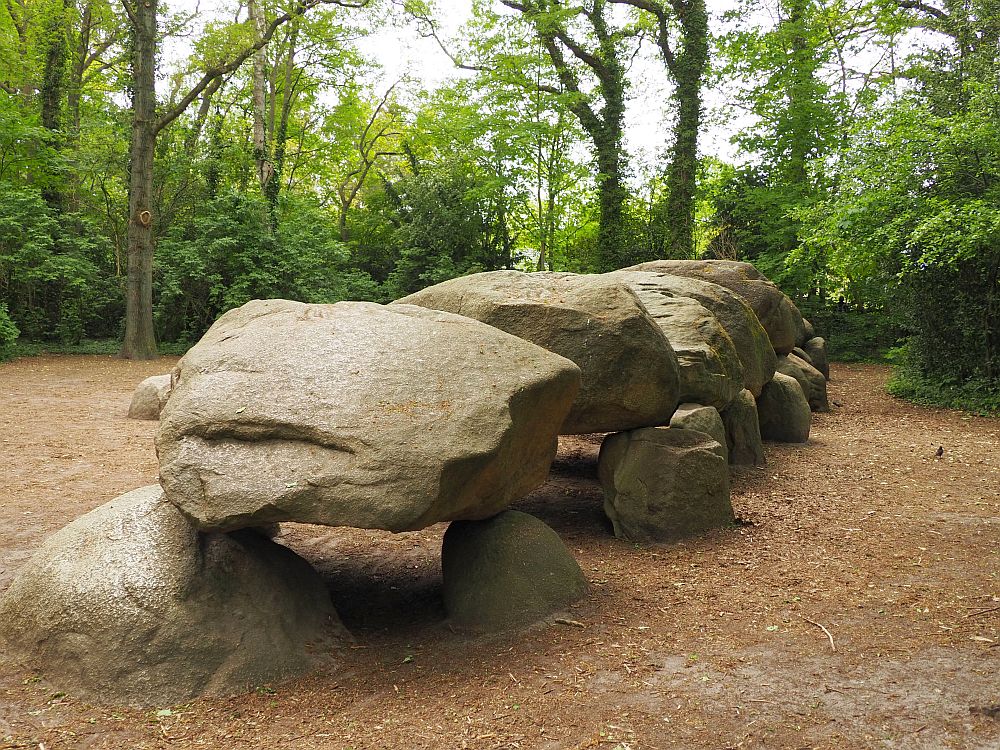
Het Hunebedcentrum: Hunebedstraat 27, Borger. Open Monday-Friday 10:00-17:00; Saturday, Sunday and holidays 11:00-17:00. Admission: €5. Website.
De Wachter windmill
Molenmuseum De Wachter, in Zuidlaren, also in Drenthe province, is a working windmill that is operated as a museum. Dating to 1851, it included three different mills: one for grain, one for oil (mostly linseed) and one for spices.
Just the smell of the old wood combined with linseed is worth a visit! And if you’re there at the right moment, you can see demonstrations of ancient trades: a clog maker, a wood turner, a baker, a shoemaker, or a blacksmith. A steam engine museum includes various steam-driven vehicles and a number of old-fashioned shops sell bread, spices and other objects.
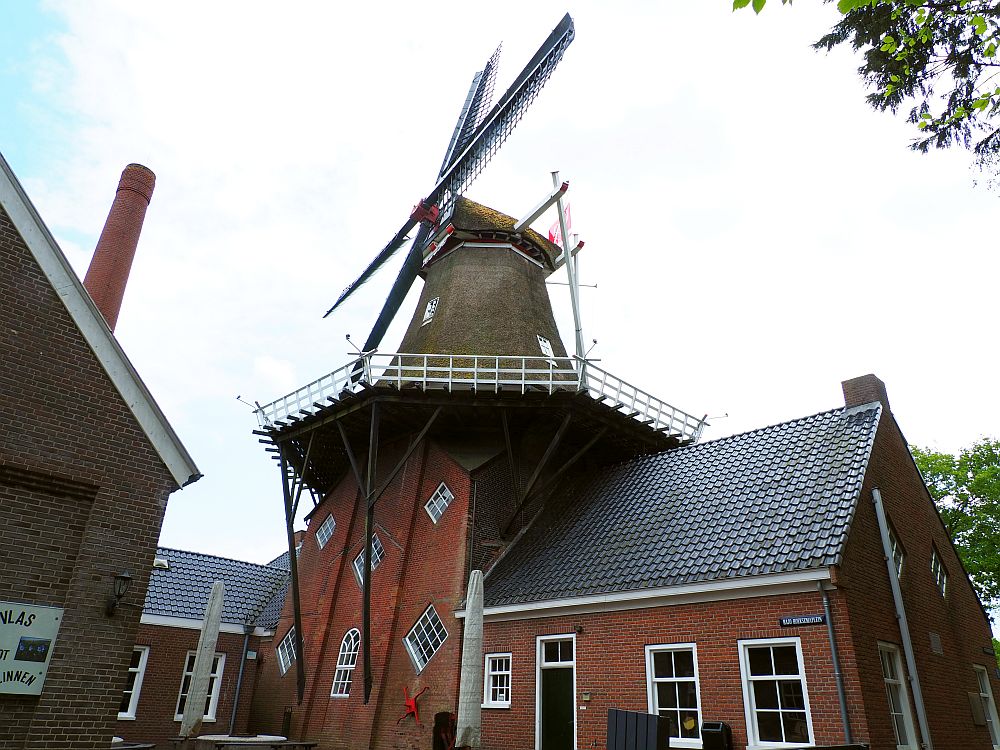
De Wachter: Bolwerk 11, Zuidlaren. Open from the 2nd half of April to the end of October, Saturday 10:00-16:00 and Wednesday 13:00-16:30. Admission: €6.50. Website.
Industrial Narrow-gauge Museum
In the time when the peat industry was booming in this region, narrow-gauge (smalspoor) railroads were used to transport the peat from where it was sourced to boats on nearby canals. Because they were small and relatively light trains, they worked best on soft peat soil, and the tracks were easy to remove and reroute. At the Industrieel Smalspoor Museum, you can enjoy a ride on a narrow-gauge train through a protected nature area. The conductor will stop here and there to explain what you pass.
The ride stops at a peat litter factory. Peat litter, made from white peat that isn’t useful for burning, was instead used in places like horse stalls to cover the floor. Besides the train ride, the museum also displays a collection of narrow-guage train cars and engines and other artifacts of the peat production era. Kids can take a turn driving a little engine as well.
Industrieel Smalspoor Museum: Griendtsveenstraat 140, Erica. Open Thursday and Saturday 10:00-16:30, Sunday 11:00-16:30. In July and August it is also open on Wednesdays 10:00-16:30. Trains leave every hour on the half hour except on Sundays, when they leave on the whole hours. Admission: €7.50 for adults €5.50 for children up to 12. Website.
The International Clog Museum
The Klompenmuseum in Eelde holds what the operators claim is the biggest collection in the world: over 2000 pairs of clogs. (Isn’t klompen a good name for clogs? It’s just what they sound like.) They’re not all Dutch, either: the museum bills itself as the International Wooden Shoes Museum.
Besides viewing the shoes themselves, you can see the equipment that is used to make them: machines from Germany, France and the Netherlands. In the video room, you can see how clogs are made.

Klompenmuseum: Wolfhorn 1a, Eelde. Open April-October, Tuesday-Sunday 14:00-17:00. Admission: €5.00. Website.
The National Prison Museum
Located in the former prison village of Veenhuizen, inside the former prison itself, the Nationaal Gevangenismuseum presents the 200-year history of the village, of the prison, and of ideas about punishment as well. The prison was originally an orphanage, then later a workhouse for beggars and the homeless, and then eventually a prison for criminals.
Using a range of interactive displays, visitors get a sense of what life was like for inmates of each period, including learning about the work they did – forced or not – and instruments of torture, actual prison cells, and so forth. A boevenbus, a bus whose interior is set up for transporting prisoners, takes visitors past prisons that are still in use and through the historic village of Veenhuizen.
Nationaal Gevangenismuseum: Oudegracht 1, Veenhuizen. Open Tuesday-Sunday 10:00-17:00 and Mondays too in the school vacations. Admission: €10, €5 for children 5-12. Website.
Museum Havezate Mensinge
While the original estate on this site dates to the 14th century, the manor house Havezate Mensinge took its current form in 1728. What’s special about this manor house is that it was a family home until as recently as 1985, and the furnishings reflect that. What that means is that you’ll see a mix of decor and furniture ranging from centuries old to the 20th century. It gives a clear idea of what life was like in such a grand country house.
On the south side of the manor house is a large park belonging to it. The woods were planted by the owners in the early 19th century, leaving wide walking paths. The park is now a mix of woodland, fields of heather and marshland.
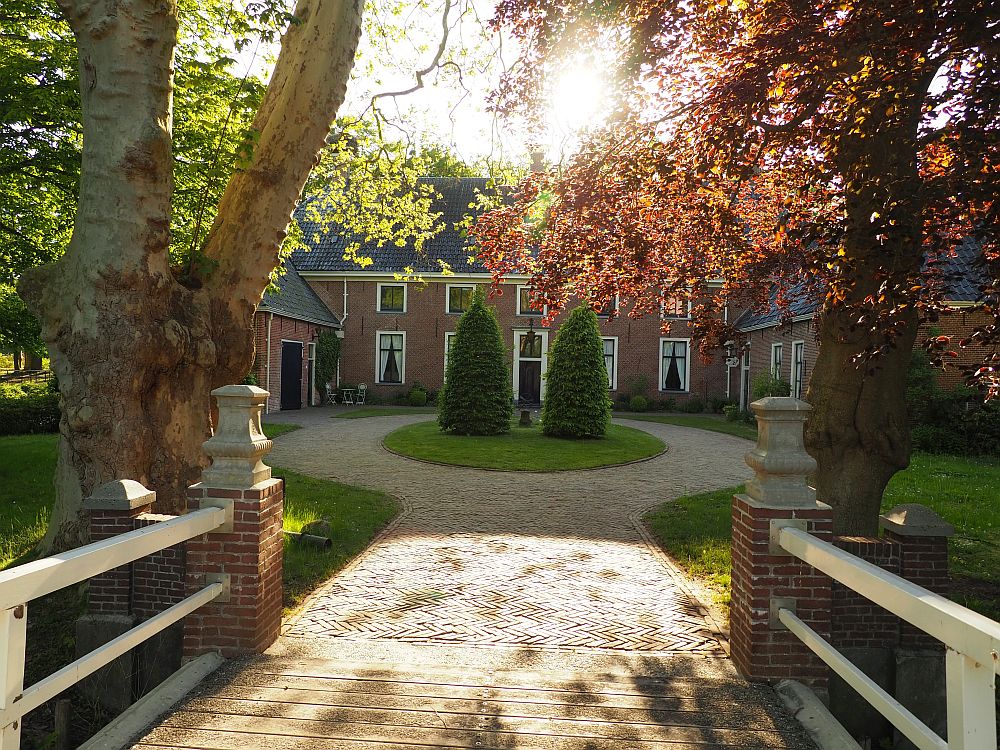
Museum Havezate Mensinge: Mensingheweg 7, Roden. Open Wednesday-Sunday 13:00-16:30. Admission: €6, €3 for children 12-17. Website.
If you like stately homes like Museum Havezate Mensinge, you might also like to read about Fraeylemaborg and Menkemaborg, both in the next-door province of Groningen.
Kinderwereld Toy Museum
Speelgoedmuseum Kinderwereld is a place I took my kids to several times when they were little but enjoyed myself just as much. It is crammed with toys, ranging from old and fragile to quite new toys like Legos. Collections include dolls (and doll houses), toy vehicles, metal mechanical toys, construction sets, wooden toys, digital toys: you name it (and remember it) and it’s there.
Antique and vintage toys can’t be touched, of course, but kids have plenty of opportunity here to play. Outside the building they can try old-fashioned games like walking on block stilts or hoop-rolling.
Kinderwereld: Brink 31, Roden. Open Tuesday-Sunday 11:00-17:00 and also Mondays during school vacations. Admission: Adults €6.50, Children 4-12 €4.50. Website.
Museum Collectie Brands
Jans Brands spent his life collecting: books, medals, coins, china, glass, archeological pieces and more: 50,000 books and 20,000 objects. The Collectie Brands is on display in his former house – much of which looks as it did when he left – and a modern addition that houses the library. The collection is also a heritage center in that the books are of value in researching Drenthe and Dutch history, World War II, law, almanacs, burial rituals … you name it.
Museum Collectie Brands: Herenstreek 11, Nieuw-Dordrecht. Open Tuesday-Friday 11:00-17:00, Saturday and Sunday 13:00-17:00. Admission: Adults €7.50, children 6-14 €2.50; on Thursdays, pay what you want. Website.
Museum De Proefkolonie Frederiksoord
Proefkolonie translates as “trial colony.” Starting in 1818 a number of trial colonies were set up as an act of charity. The idea was that if the poor from the cities were given homes, land, health care and schooling, they would work to pull themselves out of poverty, pay their debts and become prosperous farmers in their own right.
Frederiksoord was one of these colonies. In the museum are multimedia exhibits and films giving the story of the philosophy and history of this precursor to today’s welfare state. After taking in the story in the museum, make sure to take a walk or bike ride around the area to see the houses the paupers were given and the other buildings such as the church and the post office.
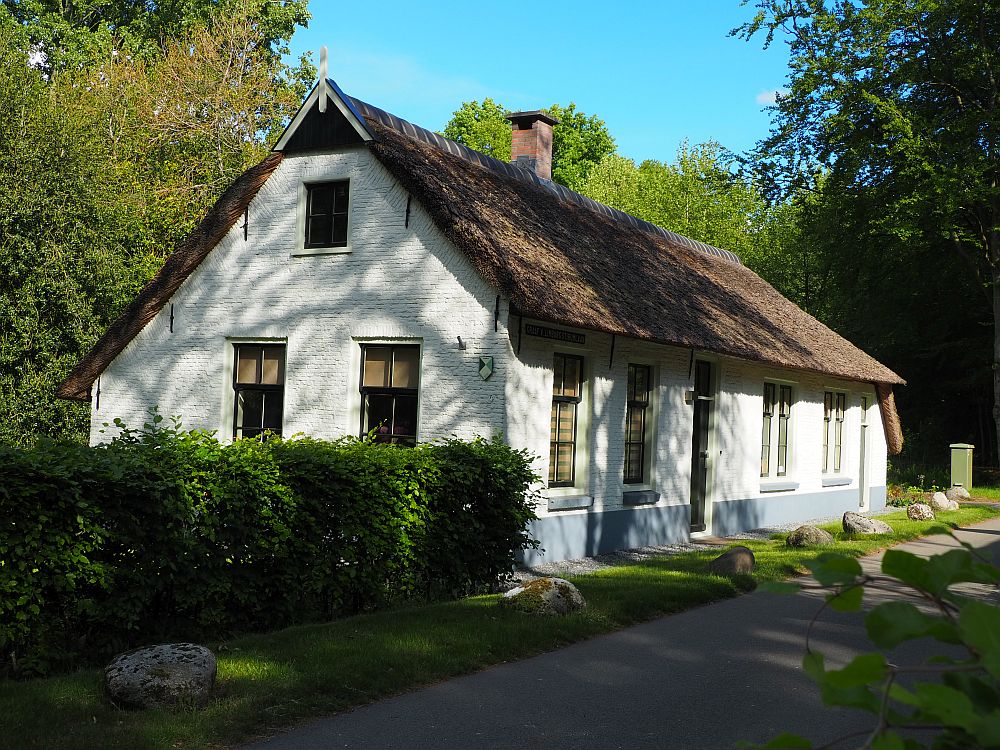
Museum de Proefkolonie Frederiksoord: Huis van Weldadigheid, Majoor Van Swietenlaan 1A, Frederiksoord. Open Tuesday-Sunday 10:00-17:00. Also open on Mondays during school holidays. Admission: Adults €9.50, children 5-12 €4.75. In April-October you can rent bikes next to the museum, but only between 10:00 and 12:00, to be returned by 18:00. Website.
Museum de Wemme
Here’s an obscure topic for a museum: handcarts. Museum de Wemme has 54 of them, to be precise. From that collection, a selection of restored historical handcarts is displayed in the museum every year. A tinsmith’s workshop is right next door and might also be worth a stop.
Museum de Wemme: Burgemeester Tonckensstraat 49, Zuidwolde. Open Tuesday-Friday 10:00-17:00, Saturday and Sunday 13:30-17:00. Admission: €3.50, children up to 12 are free. Website.
Print Museum Meppel
The Drukkerijmuseum covers the history of printing, from the earliest hand-printing on. The machinery on display is in working order and volunteers will demonstrate the print machines for visitors (except on Saturdays). For kids there are plenty of hands-on activities as well.
Drukkerijmuseum Meppel: Kleine Oever 11, Meppel. Open March-October Tuesday-Saturday 13:00-17:00 and November-February Tuesday-Friday 13:00-17:00. Admission: Adults €7.50 (including coffee or tea), children €4.50 (including hot chocolate or fruit drink). Website.
Use this link to book a hotel room in Drenthe province!
You might also enjoy reading my Amsterdam articles.
OPEN-AIR MUSEUMS
Orvelte
This small assemblage of charming thatch-roofed farmhouses in the province of Drenthe is both a living village and a museum. You can stroll around to enjoy the scenery for free, but it’s also worth paying the small entrance fee to see the farming museum, for example, or to visit the clog maker, smithy or sawmill.
There are ample opportunities to shop as well: a glassblower, an artist’s studio, various gift shops, and so on. Children will love the petting zoo; the Zoo Bizar, which houses odd small animals; and the toy truck museum. The paardentram (horse-drawn carriage) can take you on a tour of the town on Saturdays and Sundays in the summer, and every day during the school vacations.
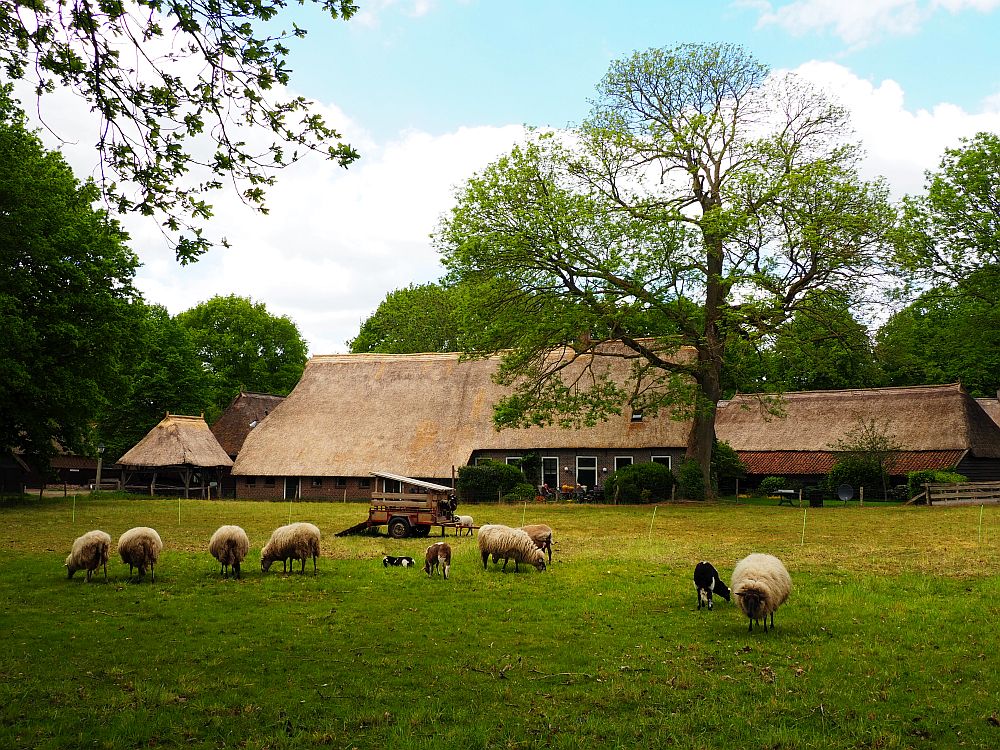
Orvelte: Flintenweg 4, Orvelte. The streets are open all the time. Buildings and exhibitions are open April-October from about 10:00, and most are closed on Mondays. November to March most are only open on Saturday and Sunday. Admission: For the buildings and museums that charge an entrance fee, the prices range from €3.00-€4.50. Website.
Veenpark
This open-air museum focuses on Drenthe’s history of peat-digging (veen = peat). For centuries, workers dug peat here to be used as fuel all over the region. (This is, by the way, the reason there are so many lakes in the northeast.)
At Veenpark you can see how the process of digging and shipping the peat happened. Buildings illustrate life for the peat-diggers: you can visit workers’ houses (older ones made of peat and newer ones of brick), a church, a mill, a school, a bakery, and so on. A narrow-gauge railway links the parts of the park. Oddly, the park also houses a museum of harmoniums.
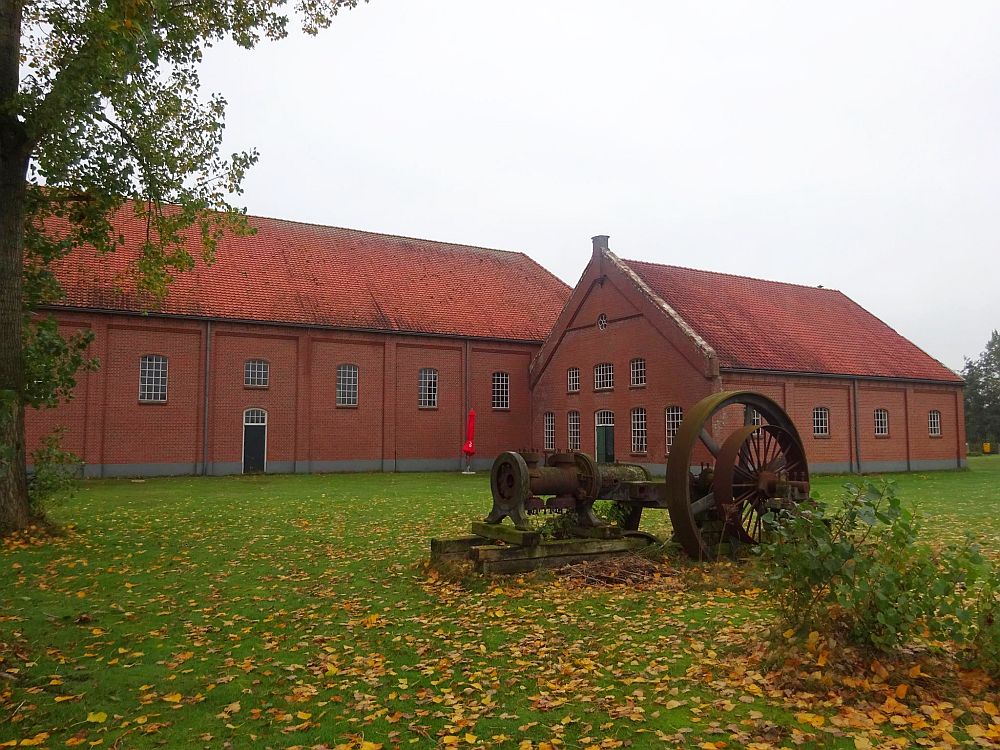
Veenpark: Berkenrode 4, Barger-Compascuum. Open daily April-October 10:00-17:00. Admission €16.50 for adults and children 5 and up. Website only in Dutch or German.
Open-air Museum Ellert en Brammert
A small open-air museum with a peat hut, a Saxon farmhouse, an old-time schoolhouse, a sawmill, a blacksmith shop, a carpentry shop, a church, a tiny prison, a playground and a petting zoo, Openluchtmuseum Ellert en Brammert is primarily aimed at children.
The museum is named after a local legend about two giants, Ellert and Brammert, father and son poachers, who lived here and attacked anyone who crossed their fields. They captured a young woman and imprisoned her, which meant they couldn’t go out hunting together; one always had to stay to guard her. When Ellert, the father, asked her to shave him, she grabbed her chance: she slit his throat and got away before Brammert came back. Brammert was so angry that all of the nearby villagers ended up leaving as well. Two huge statues of the giants guard the entrance to the museum.
Openluchtmuseum Ellert en Brammert: Tramstraat 73, Schoonoord. Open daily April-October 9:00-18:00. Admission: €8.50 for adults, €5.00 for children. Website (in Dutch).
ART
Drents Museum
The Drents Museum is a world-class art museum and probably doesn’t belong on a list of more obscure little museums. I just don’t want you to miss it if you are an art lover. It has a wonderful collection (including Van Goghs) and brings in some stellar temporary exhibits like, for example, the Frida Kahlo exhibition that has been rescheduled for October 10, 2021-March 27, 2022.
Part of its permanent collection involves the area’s history: prehistoric “bog bodies” dug up from the surrounding area. Now in a small temporary exhibit along with other artifacts, a big new history exhibition will open in late 2022.
The Drents Museum also has what it bills as the “largest dollhouse in the Netherlands” – actually an old estate house that is furnished to period.

Drents Museum: Brink 1, Assen. Open Tuesday-Sunday 11:00-17:00 and Mondays during the school vacations. Admission: Adults €15.00, children up to 17 free. Website.
Museum de Buitenplaats
The two main buildings of this small art museum form quite a contrast. One is an estate house called the Nijsinghhuis and dates to the 17th century. The other, completed in the 1990s, is what could be called “organic” architecture. The buildings are roofed with earth that flows into the garden around it.
In the Nijsinghhuis, artists started in the 1980s to paint murals covering the walls. In the new building the museum shows mostly figurative art from the post-war era in four exhibitions per year, plus some of its permanent collection of realistic art. Make sure to check out the sculpture garden as well.
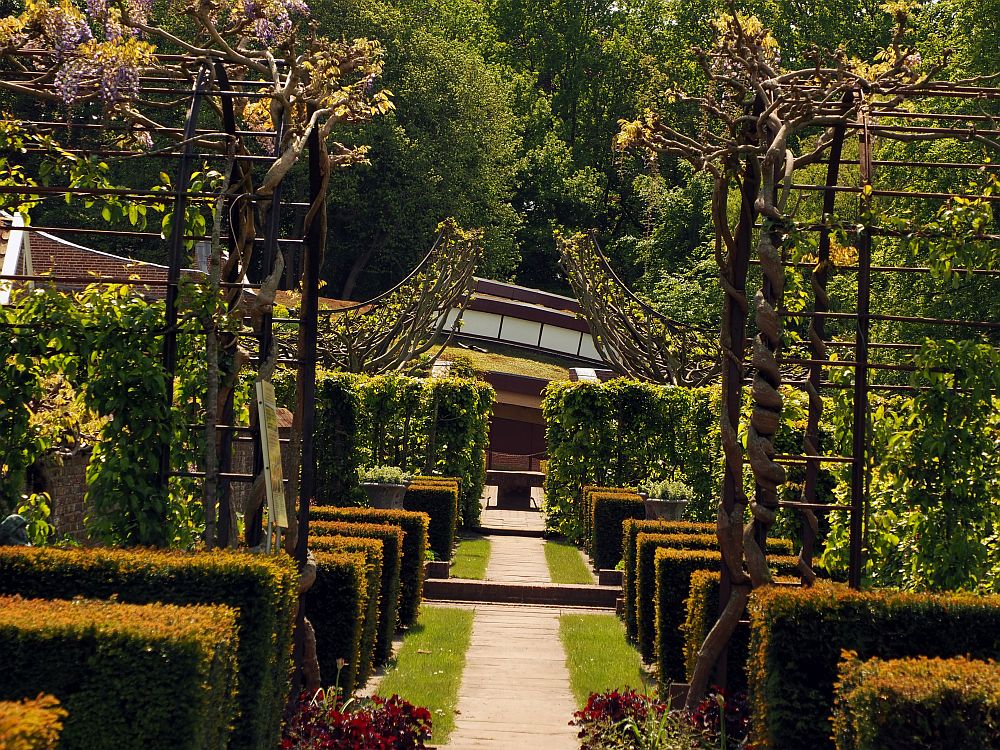
Museum de Buitenplaats: Hoofdweg 76, Eelde. Open Tuesday-Sunday 11:00-17:00. Between exhibits the museum is closed for a week. Check their website to be sure it’s open. Admission: Adults €10, children to 18 free. Website.
The Museum of False Art
The Museum Valse Kunst houses, as its name proudly proclaims, forgeries of famous paintings. Each fake has a story, and brings up the question of when we can consider a work to be art. Check out the not-particularly-skillful copy of the Mona Lisa. This is an odd museum, but fun.
The museum does have some real art too: a collection of glass art as well as work by local artists. A children’s studio can keep your kids busy creating a work of art while you browse.
Museum Valse Kunst: Brink 1, Vledder. Open April-October, Wednesday-Sunday, 11:00-17:00; November and December only on Saturday and Sunday, 11:00-17:00. Admission: €8. Website.
Museum of Contemporary Tibetan Art
Opened just in 2017, this little museum exhibits art by Tashi Norbu as well as a range of other artists from Tibet and around the world. Norbu, an ordained monk, also leads daily meditations and chanting.
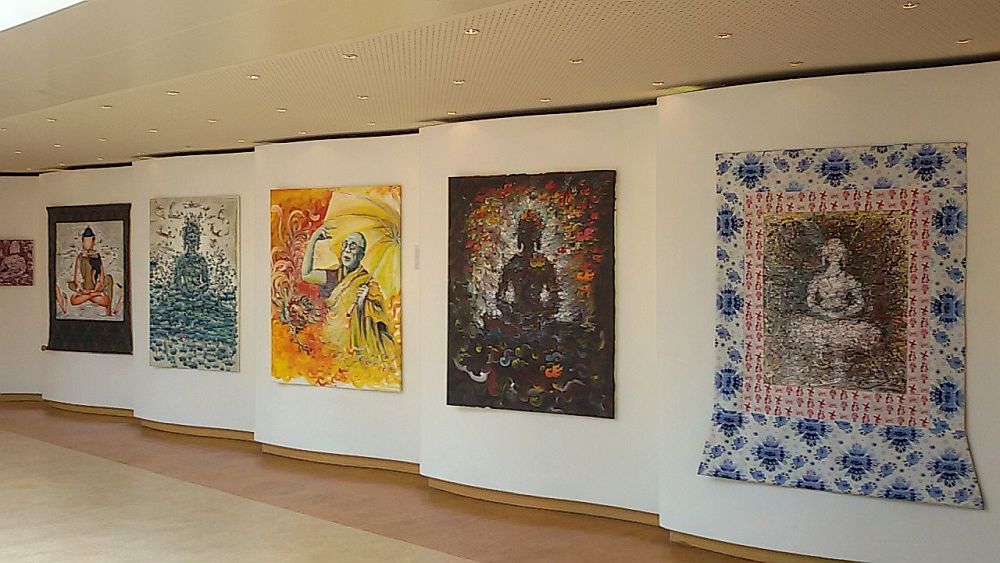
Museum of Contemporary Tibetan Art: Hoofdstraat 16c, Emmen. Open Wednesday-Sunday 11:00-17:00. Admission: €2. Website.
Sculpture garden de Havixhorst
In the grounds of the lovely estate house, de Havixhorst (now a hotel and restaurant), Beeldenpark de Havixhorst shows a range of modern and contemporary Dutch figurative sculpture.
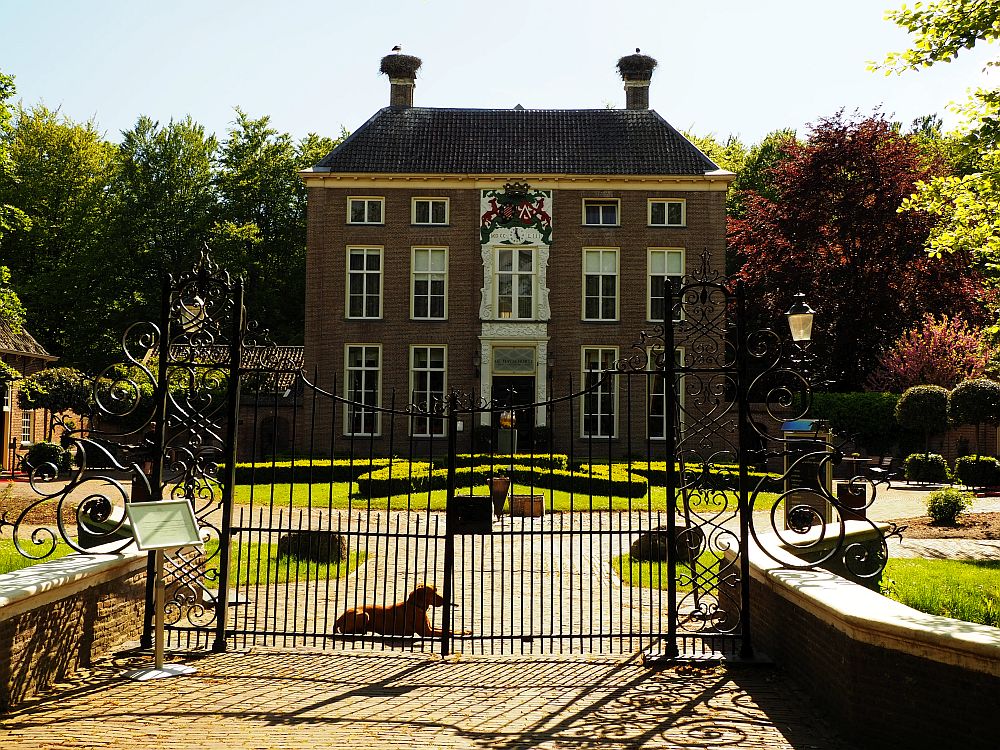
De Havixhorst: Schiphorsterweg 34-36, De Schiphorst. Open daily 10:00-17:00. Admission: free. Website.
Beelden in Gees
Beelden means “images” or “sculptures,” and Beelden in Gees is a sculpture garden and gallery. Every summer new contemporary sculptures are installed around the seven-hectare park, making for a lovely stroll if the weather is good. The sculptures include both figurative and non-figurative.
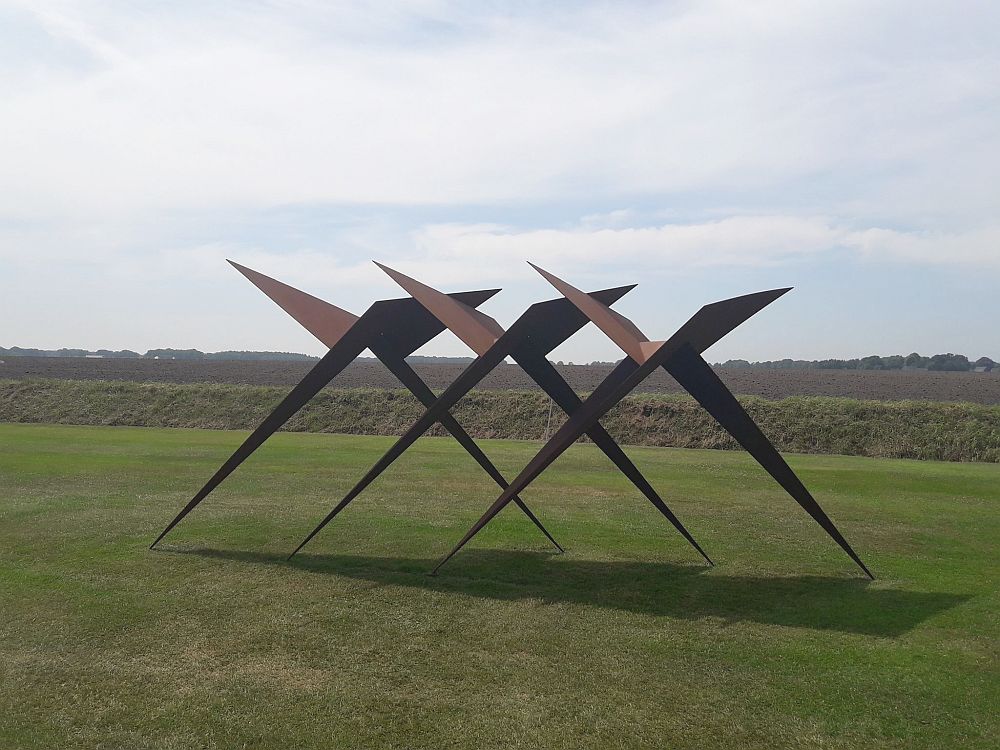
Beelden in Gees: Schaapveensweg 16, Gees. Open April, May, June and September Wednesday-Sunday 12:00-17:00; July and August Tuesday-Sunday 11:00-17:00 (Check for exact start and end dates on their website.). Admission: Adults €10, children 4-10 €5. Website.
ANIMALS AND NATURE
Butterfly Paradise Papiliorama
Butterflies from all over the world live in the hot and humid Vlinderparadijs Papiliorama. It’s not a big place and won’t take long, but make sure to give it a bit of time: just stand still and observe. You’ll see plenty of butterflies. They are most active in the morning, so get there early.
Several other activities are available nearby Papiliorama. If there are two of you, you can pedal the small-gauge rail bicycle (Fietsen op de Rails) on a 2.5-kilometer rail through Holtingerveld, a nature reserve. If you’d rather, just take a walk.
You could, alternatively, take the 900-meter walking trail to the second-biggest hunebed in the Netherlands (D53), and then cross the street to the nearby smaller one (D54).
Lastly, at the Schaapskooi, a barn for sheep, you can see the flock that is used for maintaining the fields of the Holtingerveld nature reserve. The shepherd lets them out at about 9:30 each morning and, with the help of shepherd dogs, leads them to their fields for the day. They come back at about 16:30.
Vlinderparadijs Papiliorama: Van Helomaweg 14, Havelte. Open daily 9:00-17:00 but they will close earlier (perhaps 15:15) on overcast days and in the winter, since the butterflies stop moving if there’s less sunlight. Admission: Adults €7, children 3-12 €5. Website.
Fietsen op de rails: Van Helomaweg 14, Havelte. Buy the ticket at the Papiliorama. The ride can start on Tuesday, Wednesday or Thursday at 9:30, 11:30 or 13:30. Every second week on Saturday and Sunday, the same times are available. In the summer months there is an additional start at 15:30. Price: €18 per bike for maximum 2 people. Because of the limited start times, it’s a good idea to book ahead through their website.
Wildlands Adventure Zoo
Wildlands doesn’t really belong in a list of lesser-known things to see in Drenthe: it’s quite well known and popular, especially to visit with children. It used to be the Emmen Zoo, a pretty traditional zoo. It expanded and reopened as Wildlands, a bit of a cross between an amusement park and a zoo. Visitors see “Jungola” on a boat ride and “Serenga” (Africa savannah) from a truck and children have ample opportunity for physical activity.
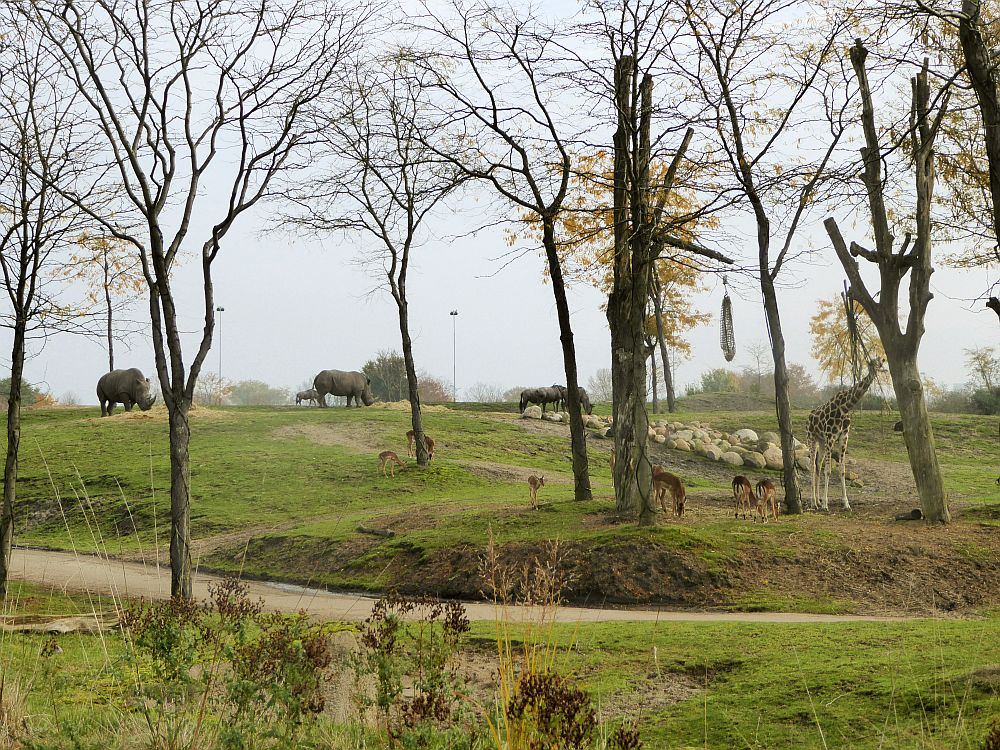
Wildlands: Raadhuisplein 99, Emmen. See website for hours. Admission: Adults €22.50, children 3-9 €19.50, if you order tickets ahead through their website. Otherwise the price is €27.50 and €23.00. Website.
Buitencentrum Boomkroonpad
Buitencentrum Boomkroonpad translates as “outdoor center treetop path.” You can take a walk or bike ride through the extensive woods, but the main attraction, of course, is the treetop path, which allows you to see the woods from about the height of the trees. For kids, there is also the Spelbos Larken: an area of woods where they can climb trees and build huts, for example.
Buitencentrum Boomkroonpad: Steenhopenweg 4, Drouwen. Open daily April-October 10:00-17:00; November-March only Saturdays 12:00-16:00 and Sundays 10:00-16:00. Admission: Adults €4.50, children 4-12 €2.25. Website only in Dutch.
Bird and Animal Park Ruinen
This small private zoo, Vogel en Dierenpark Ruinen, contains a wide range of birds, mostly from within the Netherlands. Meadow and wading birds, owls, starlings, and pretty much any kind of bird you can think of: they’re all here. It keeps a few small animals for variety, but mostly this little zoo is about birds.
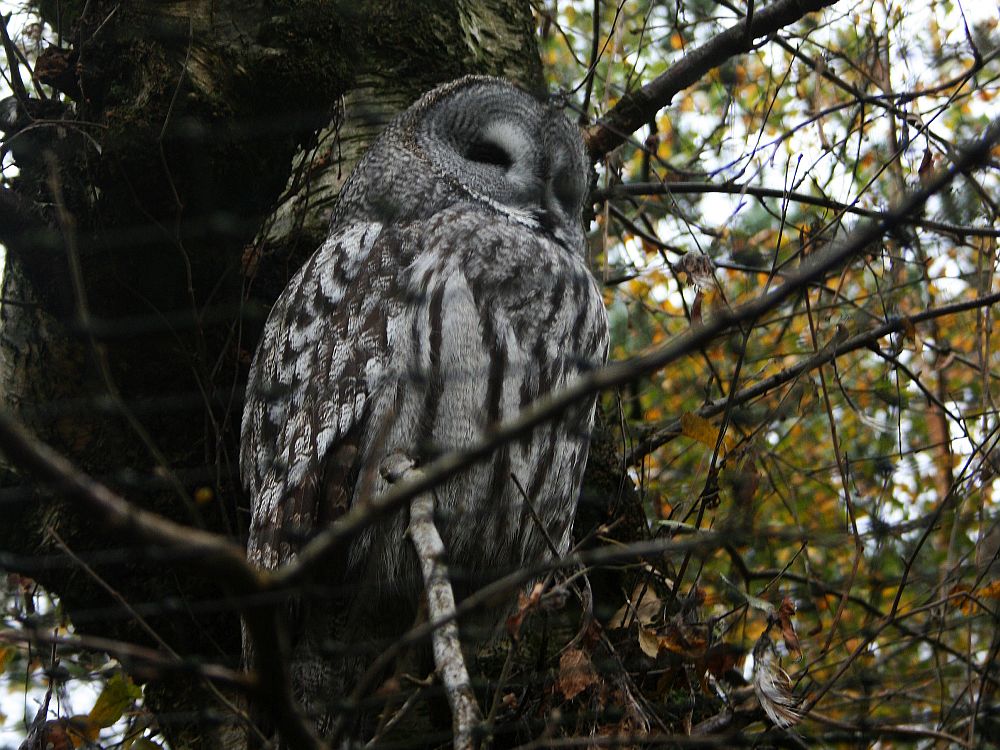
Vogel en Dierenpark Ruinen: Postweg 3, Ruinen. See website for opening hours. Admission: Adults €7.50, children 10 and under €4. Website.
Miramar Sea Museum
Despite its name, Miramar Zeemuseum is not an aquarium. It’s more like a holdover from an earlier time, when intrepid explorers brought back souvenirs from their travels and exhibited them. Jeanne Warners traveled and collected specimens: in this case, items from the sea. This collection grew from her travels to become her “cabinet of rarities” now viewable in antique display cases in this museum. It includes shells as well as crabs, fish, corals, sponges and other sea creatures, either dried or in solutions in jars. The museum’s current temporary exposition addresses the “plastic soup” in the ocean.
Miramar Zeemuseum: Vledderweg 25, Vledder. See website for opening hours. Admission: Adults €7.50, Children 4-12 €4.50. Website.
OTHER
The C+B Museum
Cuby & the Blizzards was a Dutch blues band back in the 1960s. Their lead singer, Harry Muskee, went to live in this house in Grolloo, near Assen. The house became a gathering place for Dutch musicians, which must have been quite a culture clash in such a sleepy little town. They must have seemed like invaders from outer space with their long hair and loud music.
The house is now a museum dedicated to keeping the group’s music alive. Downstairs you’ll see where Muskee (and often other members of the band) lived, along with lots of memorabilia, recording equipment, instruments, and so on. This continues into the barn, which was their rehearsal space, and upstairs, where videos show the band’s performances.
C+B Museum: Voorstreek 4, Grolloo. Open June-August Tuesday-Sunday 11:00-17:00; September-October Thursday-Sunday 11:00-17:00; November-April only on Sundays 11:00-17:00. Admission: €7.50. Website.
Play and Ice Farm De Drentse Koe
This former dairy farm has transformed into a farm-themed playground. If the weather is good, the playground equipment, bouncy structures, and farm animals to pet will keep your kids happy for hours. Inside they can play on the indoor climbing structures in the cowshed’s upper floor (above the cows!) or in the indoor playground in the former barn.
In warm weather, bring bathing suits and towels: inside and outside the kids can enjoy all sorts of water play. The farm produces its own ice cream as well.
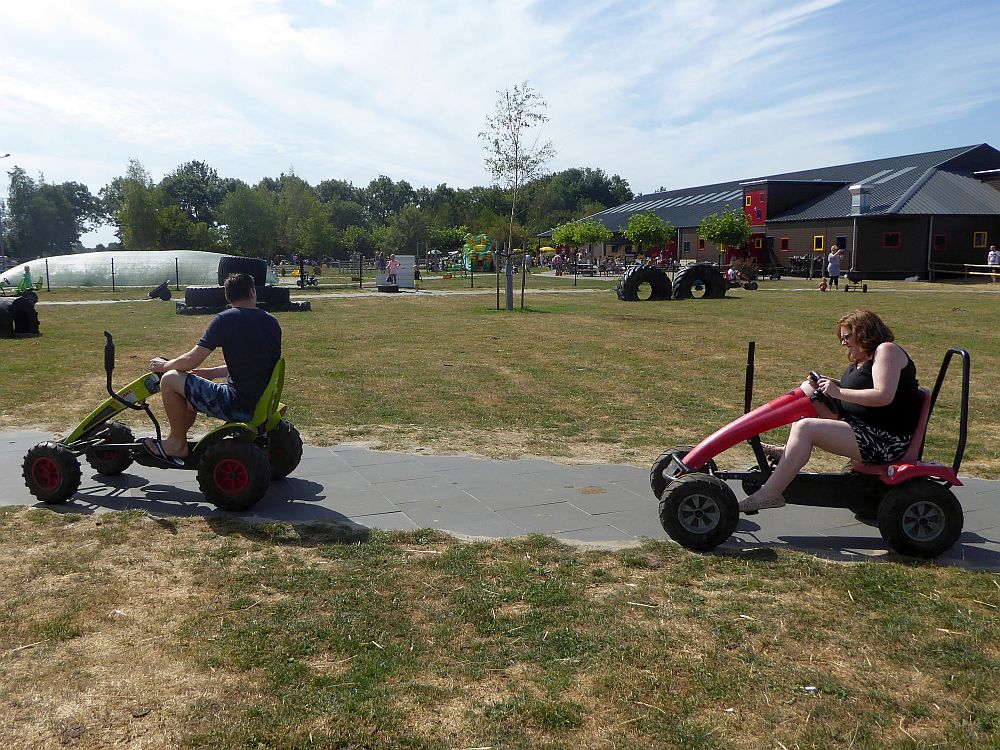
De Drentse Koe: Wolddijk 23, Ruinerwold. Open daily mid-February-October 9:00-13:00 and 14:00-18:00; November-mid-February on Wednesday, Friday, Saturday and Sunday 10:00-18:00. Admission: Adults €3.50, children 1-3 €5, children 4-16 €8.50. Website.
Sprookjeshof
Originally a park based on fairy tales, Sprookjeshof (sprookjes are fairy tales) has grown into a large playground on steroids. The original fairytale wood still has the old-fashioned dioramas telling the fairytale stories, but the real draw is the playground, where some of the equipment is more ride-like than most playgrounds feature. These are not amusement park rides in the usual sense: they’re almost all kid-powered (and sometimes parent-powered). Your kids will get a thrill and be absolutely exhausted by the end of the day. If it rains, the indoor playground (lots of climbing!) will keep them happy.
If you manage to tear the kids away from the playground, there’s also a petting zoo and miniature golf available.
Sprookjeshof: Groningerstraat 10, Zuidlaren. Open daily mid-April-September 10:00-18:00 and in the school vacations. The rest of the year open Wednesday and Friday 12:00-18:00 and Saturday and Sunday 10:00-18:00. Admission for adults and children: €9.95. Website.
Use this link to book a hotel room in Drenthe province!
Map
Here is a map showing the location of each of the sights listed above. Click on the icons to see the name of each one, or click on the square symbol at the top left to open a key listing all the names.
If you know of other things to do in Drenthe province that should be on the list, add a comment below. If you think you’ll want to refer back to this list again, make sure to pin it!
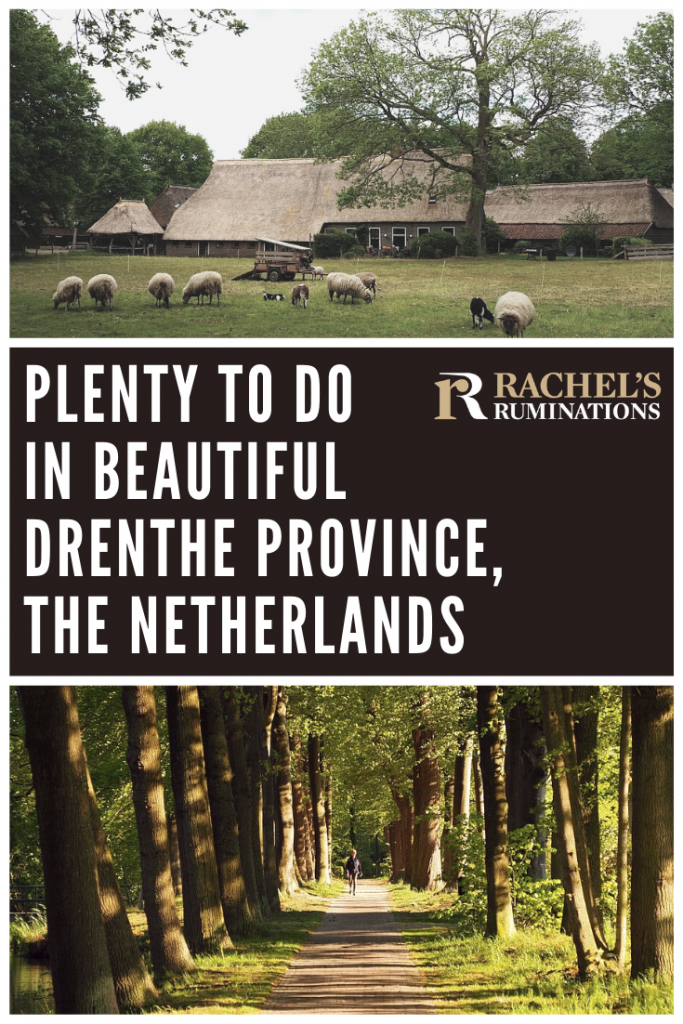



Another place to add to your list is the Van Gogh Museum in Nieuw Amsterdam. Great place to learn about van Gogh’s time he spent in Drenthe, and how he captured the mood of Drenthe at that time.
Also there is the windmill in Dalen. It is a completely operational mill which grinds grains into flour and other grain products.
Thank you! Not sure why I missed them, but I’ll add them!
Thanks Rachel for this beautiful and super complete tourism guide about Drenthe. I have lived 10 years in This province and I never heard of so many places On your list before. I will definitely this information in 2021
Cheers , Tatiana
Glad you like it! If you hear of any more places to see, let me know!